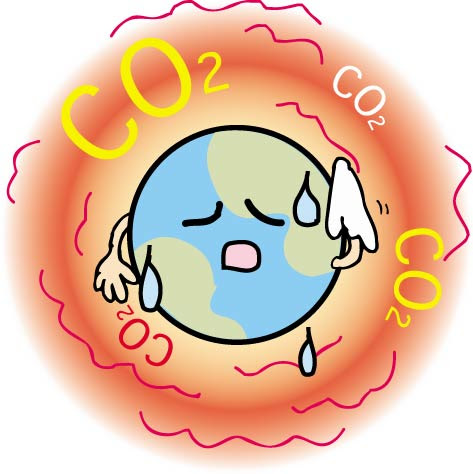The darkest day of 2021 will soon pass. On December 21st, the sun will stop on its southward journey, momentarily hover over the Tropic of Capricorn, and begin its march northward. Daylight hours will gradually increase, and, after a fashion, the temperatures will warm. The grass will grow and trees will put forth their greenery. All will be well. Well is an illusion.
December 21st also marks the shortening of days in the southern hemisphere. Sunlight hours will decrease. Everywhere south of the equator, the conversion of carbon dioxide to oxygen and carbon containing molecules will slow. While the process of photosynthesis will slow in the southern hemisphere, it will increase everywhere in the northern hemisphere. Seasonal changes are as old as the Earth and the Sun. Carbon dioxide removal from the atmosphere by photosynthesis, however, is not equal for the two hemispheres. Carbon dioxide removal from the atmosphere is slightly higher in the southern hemisphere because the ocean surface area is greater.
Century after century, both hemispheres have been doing their part in removing carbon dioxide from the air. Researchers have determined that the carbon dioxide level has bounced between 200 ppm (parts per million) and 280 ppm for millions of years until the present time. In 2013, the carbon dioxide level exceeded 400 ppm.
Many scientists believe the increased level can be attributed to carbon dioxide produced by the burning of fossil fuels. World fossil fuel usage is 23 times greater today than in 1900. In 1900, the atmospheric carbon dioxide level was below 300 ppm. It would seem that natural photosynthesis cannot keep pace with the new carbon dioxide introduced by fossil fuel usage. Environmentalists are concerned because in past times global carbon dioxide levels have been highest during interglacial periods and lowest during ice ages. There is good cause to believe that atmospheric carbon dioxide is the driving force that produces alternating periods of global cooling and global heating.
Photosynthesis is a chemical reaction. The rate at which photosynthesis produces oxygen speeds up during interglacial periods in which global temperatures are warmer and slows when global temperatures are cooler. In past interglacial periods, photosynthesis has removed carbon dioxide from the atmosphere at a rate faster than the rate at which CO2 is introduced by natural processes. In the 1950’s and 60’s, school-age children were told that the planet was on the verge of a new ice age. The beginning of that ice age is nowhere in sight. Photosynthesis has been converting CO2 to O2 at an increased rate but not at a rate sufficient to offset the carbon dioxide produced by fossil fuel usage. The promised cooling is not happening. Alarmists believe that global temperatures will increase and make it impossible for Planet Earth to satisfy the future needs of its current 7 billion people.
Only time will tell if the alarmists of today are correct. Historically, mankind has always done that which is necessary to survive. Civilization is dependent upon doing that which is best for all. Fossil fuel usage has allowed civilization to flourish. World population has increased more than seven fold since the invention of the steam engine produced the need to rely upon fossil fuels.
The push by globalists to replace fossil fuels with renewable energy sources may be a case of doing what is best for all. The forced transition to renewable energy by edict is, however, contrary to the manner of past transitions. No one switched from the horse and buggy to fossil fuel consuming automobiles because they thought it was best for all. The switch to new technology was spurred by that which was best for individuals.
Great division of people exists today because some believe what is best for individuals is best for all while others believe that what is best for all should dictate individual choice. Hypocrisy reigns supreme as advocates of renewable energy jet from one continent to another.
A major stumbling block to doing that which is best is the disagreement of what is best. Some would argue that discontinuance of fossil fuel usage is not a solution because the carbon dioxide levels resulting from 200 hundred years of fossil fuel use cannot be undone by natural photosynthesis in the span of several human lifetimes. A solution must produce a measurable outcome.
Seventeenth century alarmist Thomas Malthus believed that the quality of human life would collapse because the Earth’s finite resources could not supply the needs of an ever increasing population. Malthus was wrong. Mankind discovered technologies which allowed limited resources to supply increased human needs. Fossil fuel usage was instrumental in providing a solution an unsolvable problem.
The solution to elevated greenhouse gas concentrations may or may not be their removal from the atmosphere by photosynthesis. New technologies will emerge. Alternatives to removal by photosynthesis may be discovered. Technologies capable circumventing elevated temperature constraints may be come available. The future, while unknown, is as certain as the darkest day.
December 21 is a day without any sunlight in northern polar regions. Year round inhabitants of these northern reaches do not see the sun but they are confident that it shall return. We, too, know that tomorrow the sun will shine.



